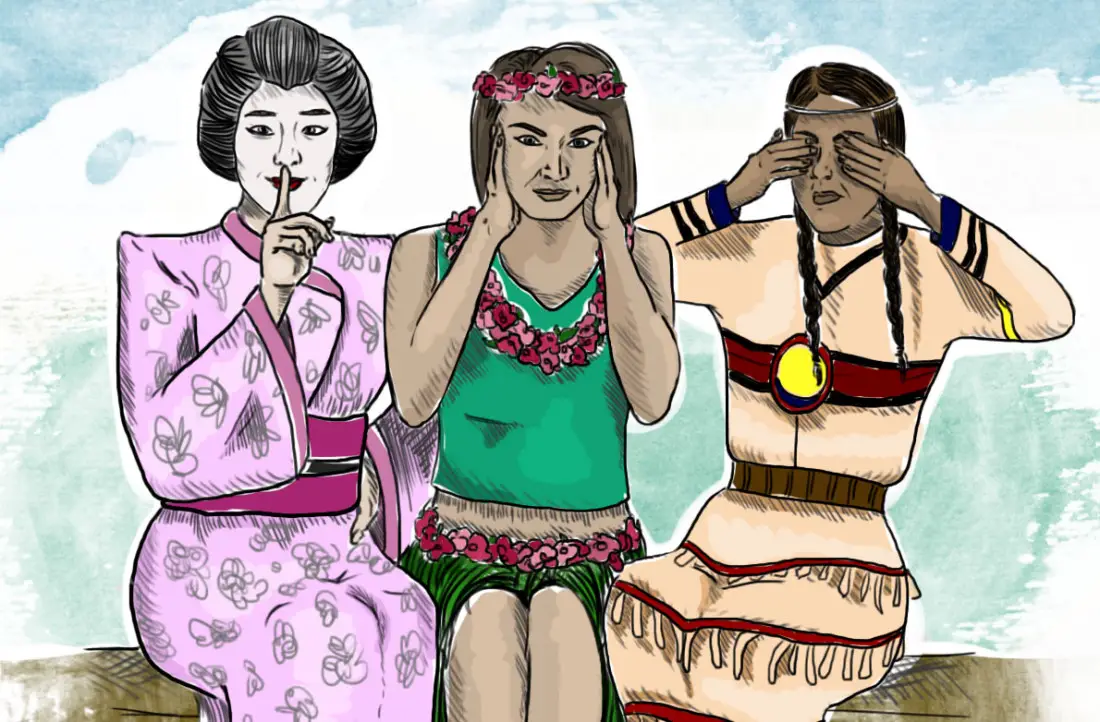The Cambridge Dictionary defines cultural appropriation as “the act of taking or using things from a culture that is not your own, especially without showing that you understand or respect this culture.” Meanwhile, the top definition on Urban Dictionary for the term is “The ridiculous notion that being of a different culture or race (especially white) means that you are not allowed to adopt things from other cultures. This does nothing but support segregation and hinder progress in the world. All it serves to do is to promote segregation and racism.”
Much like the tale of the boy who cried wolf, individuals have called out cultural appropriation so many times that the definition has evolved from the former to the latter. When someone declares that something is an act of appropriation, a slew of critics will then inevitably counter the accusation with incredulity. So, as in the story, just like when the wolf is real the last time the boy cries for help, actual instances of cultural appropriation risk being ignored because the term has been flippantly used so often.
Without adopting elements from other cultures, many traits of current cultures wouldn’t exist—take tea, for example. Its roots are set in ancient China, Japan and India, where the drink was an important part of their civilizations. Tea is famously known to have had a sacred significance to the people, even reflecting the Buddhist religion during their tea ceremonies. Once trade became more widespread in the seventeenth century, Europeans started to drink it as a way to take part in Asian culture. Eventually, tea became a stereotypical British beverage. In short, they took something that has sacred connotations from another culture and turned it into a novelty item of their own; soon, people began to associate the drink more with the Queen of England than a Buddhist monk. If the ramifications of cultural appropriation were considered back then to the extent they are today, tea might not have made it far beyond the Chinese border.
Tea consumption continues to be a part of various Asian cultures, and tea ceremonies are still popular in many settings. They’re performed at cultural events in the U.S. and encouraged as something for tourists to participate in when traveling abroad. So, my question is this: Now knowing the significance of tea, how can its consumption be cultural appreciation while other acts, such as a white person wearing a bindi, fall into the gray area of appropriation?
Returning to the Cambridge definition of cultural appropriation, the way it is phrased makes it appear as if not every instance is bad. I’m not saying that it’s completely fine and shouldn’t be an issue, but the basis of the definition is that individuals from one culture adopt aspects of another. This practice has been occurring since the beginning of civilization and helps societies grow; yet, it becomes an issue when the second half of the definition comes into play, which is that there was little thought behind adopting another cultural trait. Understanding the significance behind the trait can help to prevent this adoption from becoming offensive appropriation.
For example, the popular Native-American appropriation conflict stems from the fact that very sacred aspects of their culture are involved. Headdresses are used for ceremonial purposes and not just anyone can wear them. Feathers are earned when a tribe member achieves a milestone and spirit animals are a part of their religion. When a non-Native American uses one of those items, especially in a casual way, such as a party costume or a joke, it disrespects their culture. In addition, it’s even more disrespectful when considering that in history, white people tried to wipe out the entire race. This happens time and time again with other previously repressed cultures. The Urban Dictionary definition does have one thing right: Appropriation usually is done by white people.

Another question raised from the Urban Dictionary definition is whether calling out appropriation hinders progress in the world or promotes segregation. Well, my response would be both yes and no. On the one (and more obvious) hand, the people calling appropriation out are trying to make others more conscious that sometimes wearing or doing something from another culture, just because it seems cool, could be racist. On the other hand, declaring that something is exclusively for one culture is segregation. Being open to sharing cultures is an important step to take in learning how to respect one another. It’s a lesson that’s been taught since kindergarten.
For this piece, I was going to use henna as my example of appropriation versus appreciation. I was expecting a clear and easy to explain answer after a google search on when it could be considered cultural appropriation, but I should have known better. The appropriation umbrella is gray, as I mentioned before. After clicking the links that Google gave me and reading through some debates people posted, whether or not henna is appropriation became even more muddled for me. I’ve come up with my own answer for this, though I’ll admit that I’m not certain that this is the correct response or if there even is one.
Wearing henna, in general, isn’t appropriation because it’s a plant-based, temporary tattoo. However, putting symbols that have special significance in another culture without bothering to understand their meaning, just to make a fashion statement, is appropriation. As for whether getting a henna tattoo of a symbol and knowing the importance behind it is appropriation or not is still unclear. Probably the best response would be that it’s fine if done with respect. Still, there would most likely be a slew of people calling it appropriation, and how can you tell, on first glance, whether or not someone has done something, such as get a henna tattoo with religious symbolism, respectfully?
The conclusions that I came up with don’t only apply to henna, but also to just about everything that’s from another culture. To answer my first question about tea, I would say that it’s not appropriation because the original offenders who drank tea as an exotic, Asian import are long dead, and most people who participate in tea ceremonies today are aware of its significance. Being educated about cultural characteristics that people are trying to adopt and doing so in an appropriate manner isn’t always appropriation. What counts as cultural appropriation is still up for debate. But, one notion that is generally agreed upon is that belittling another culture into being seen as just exotic, trendy or a costume is inappropriate appropriation.

















